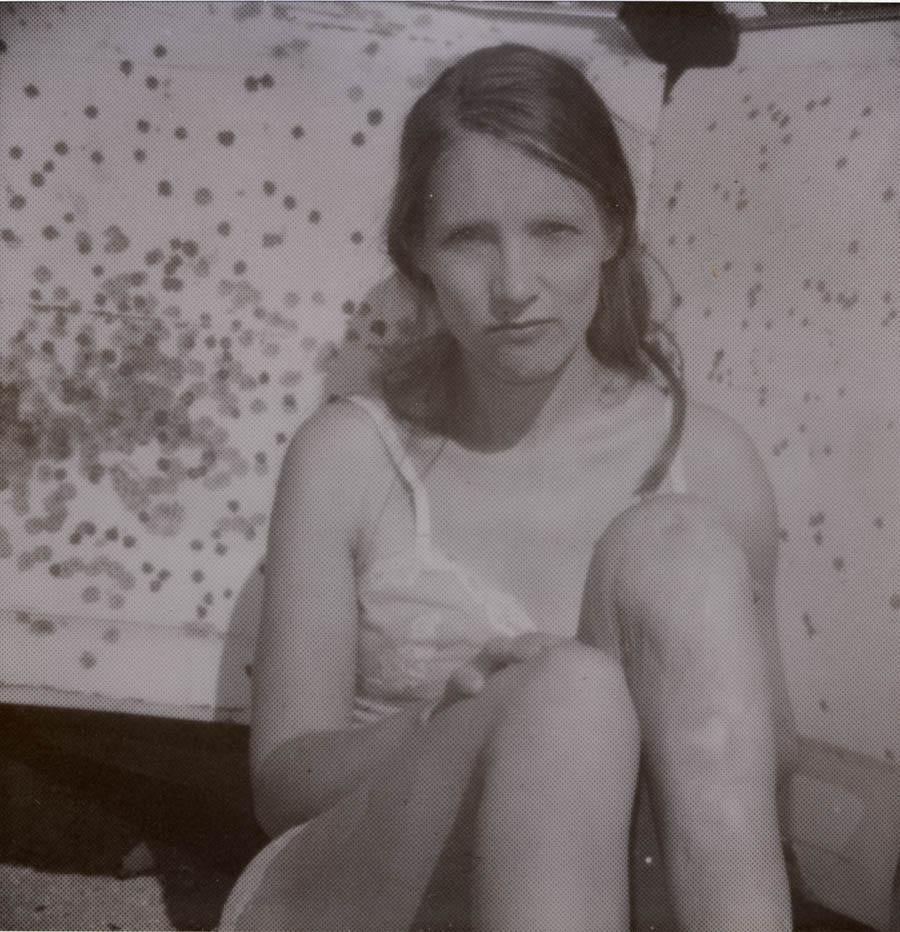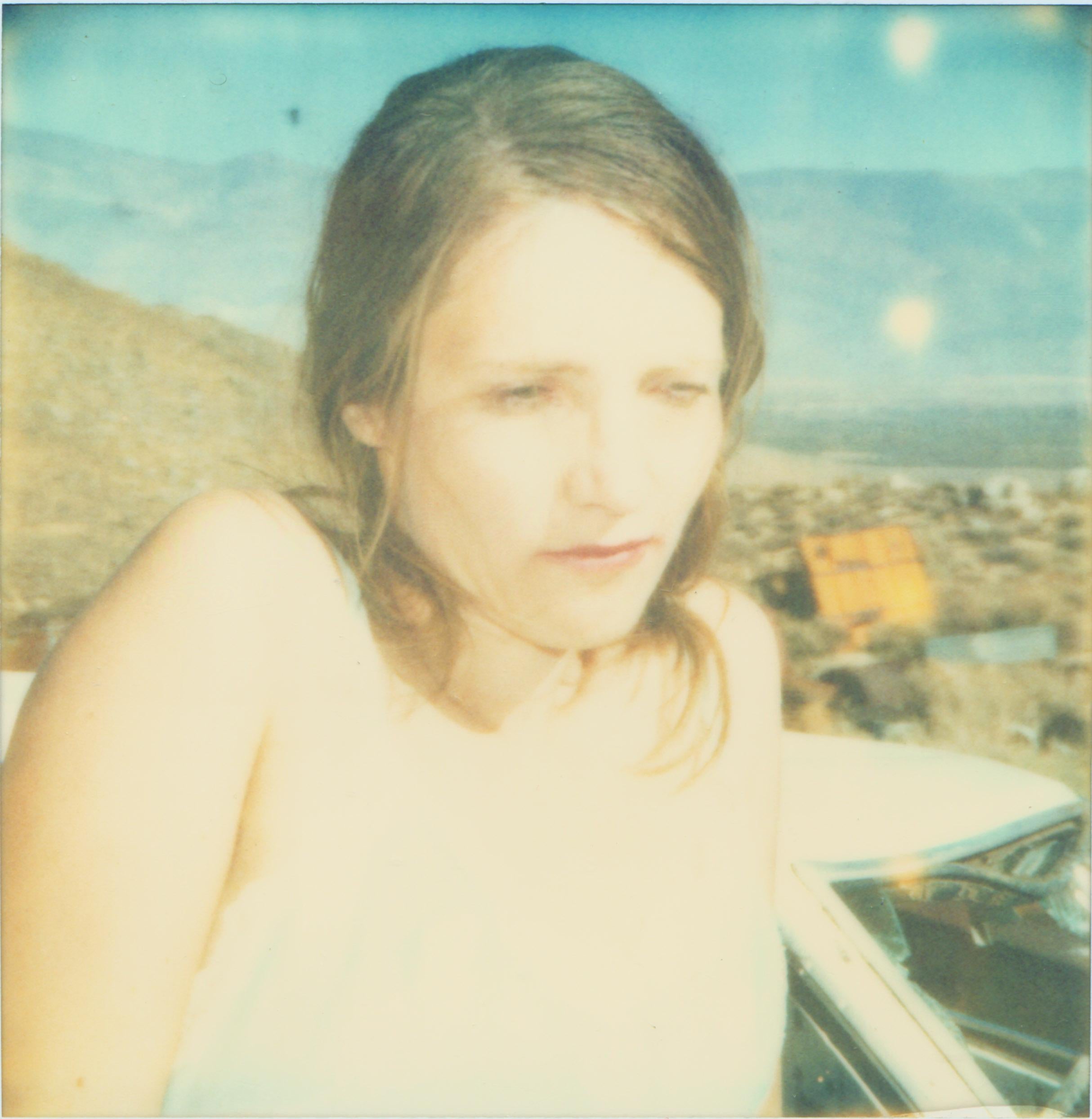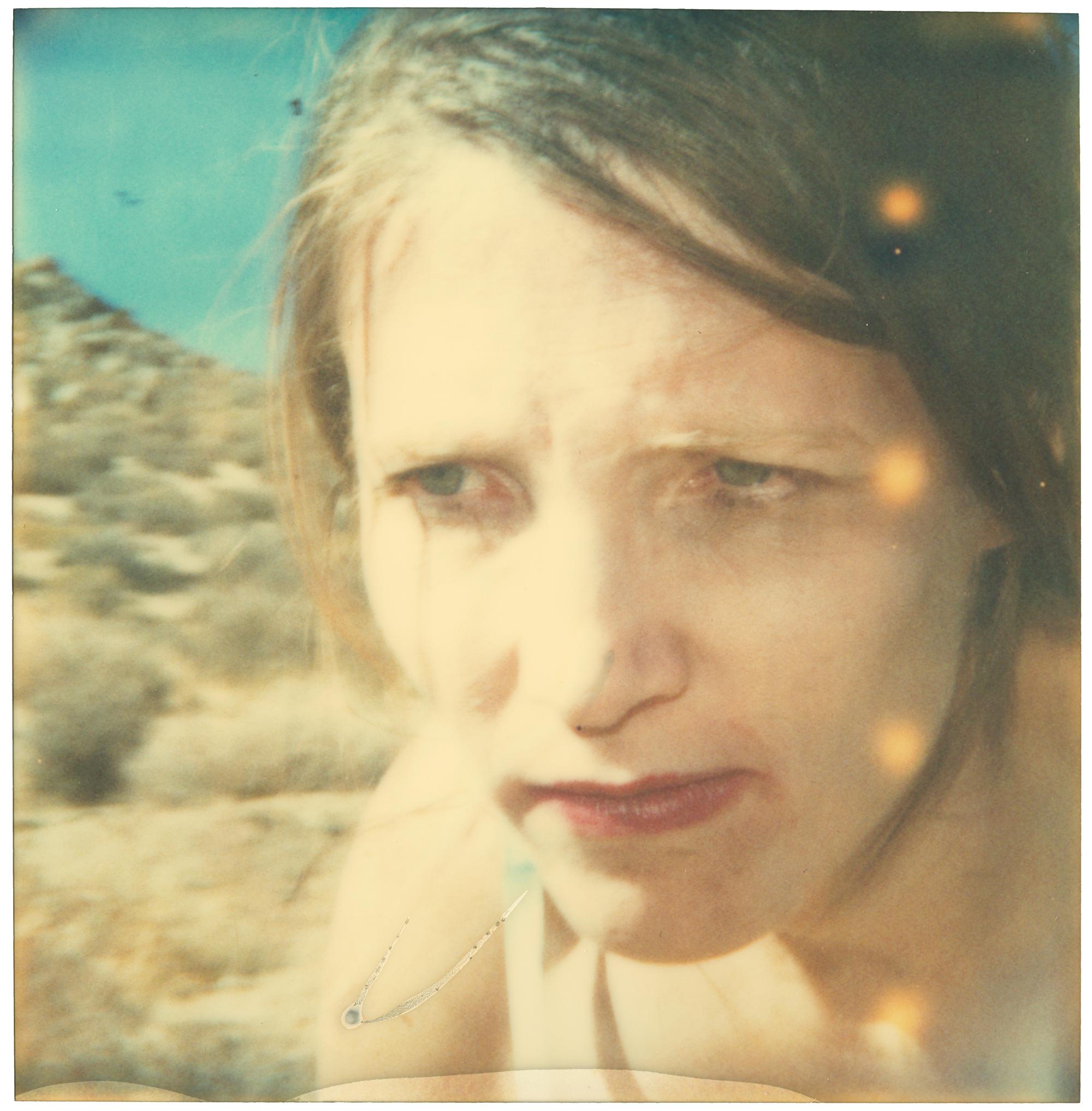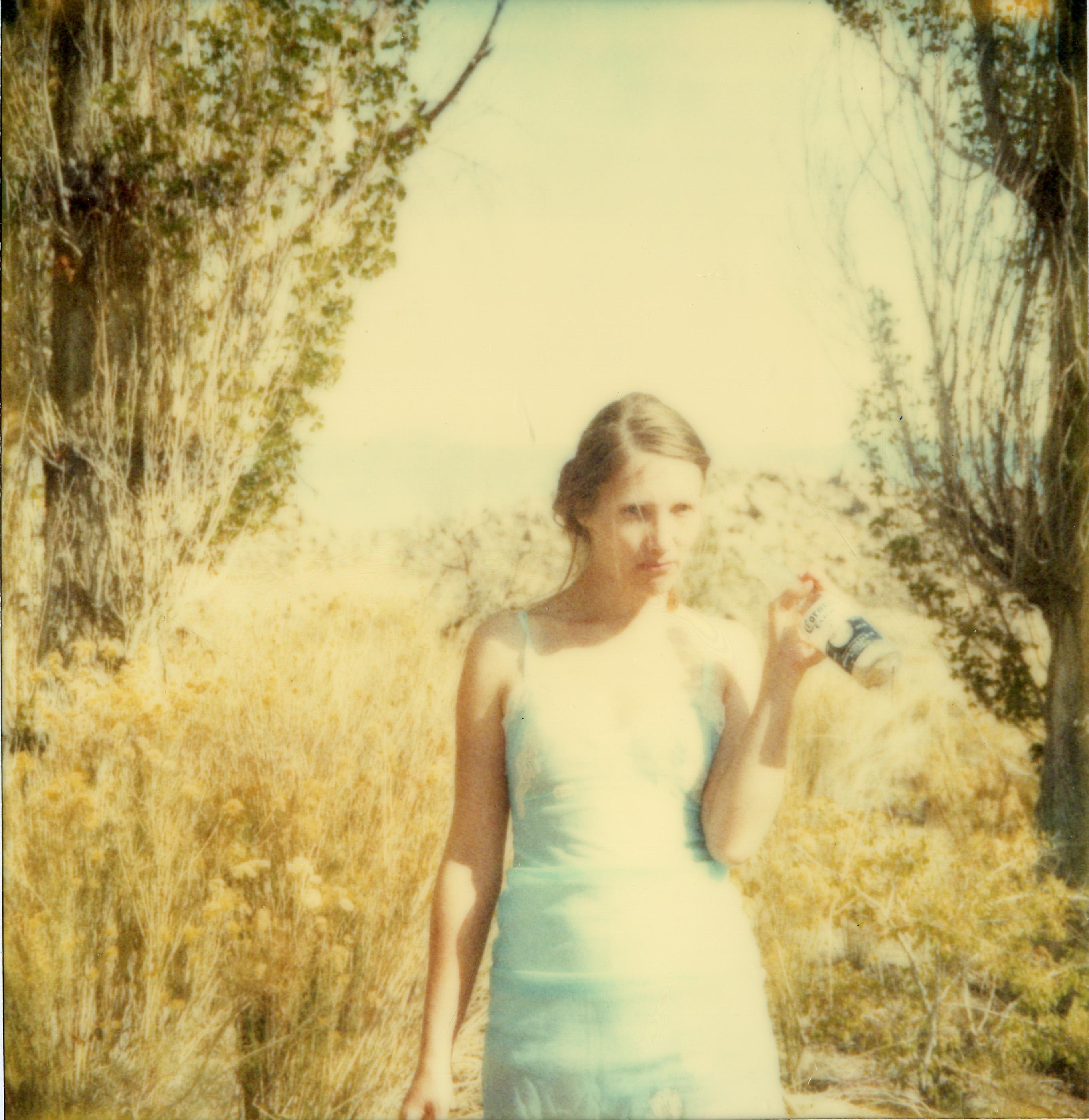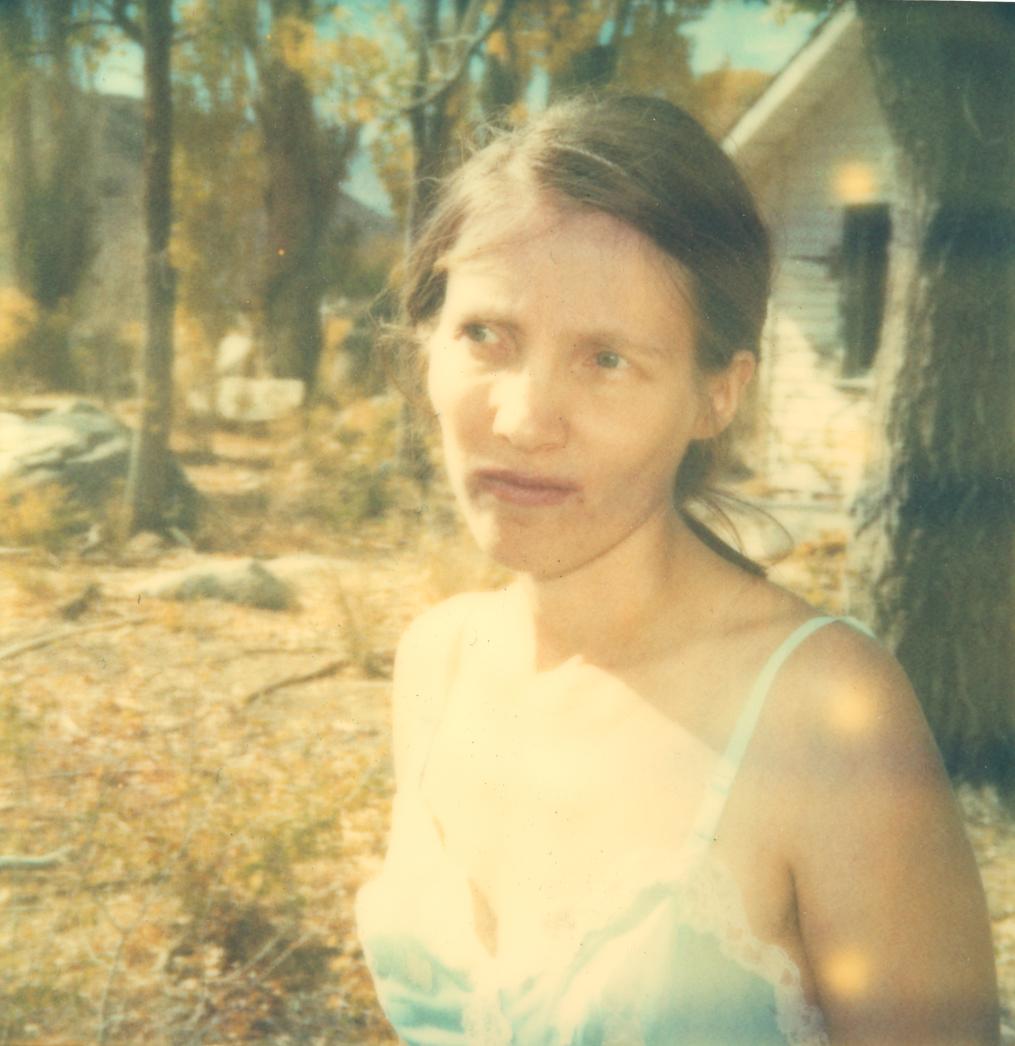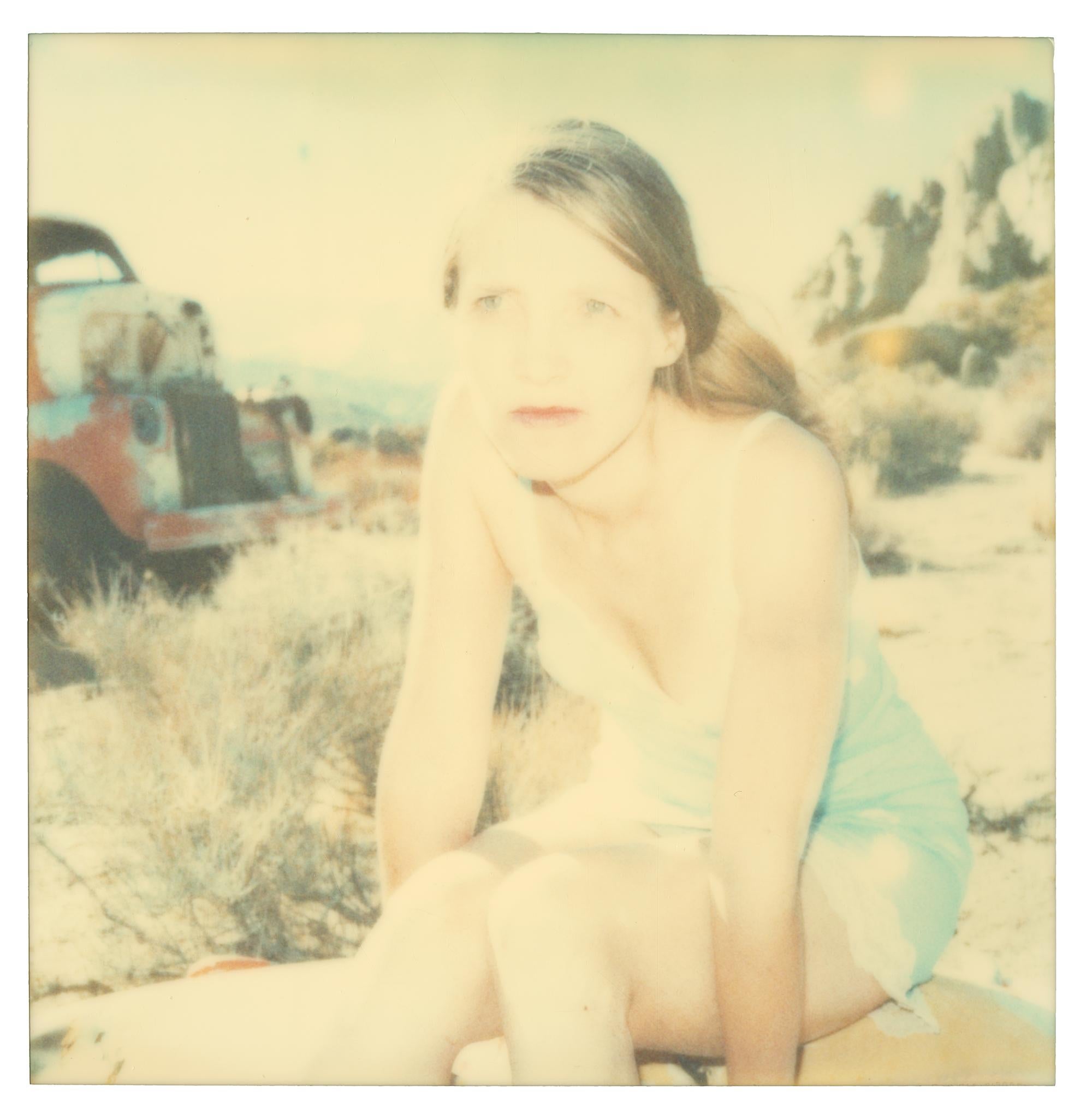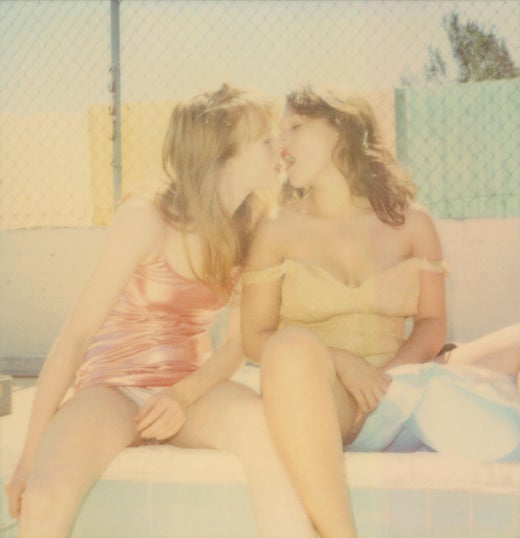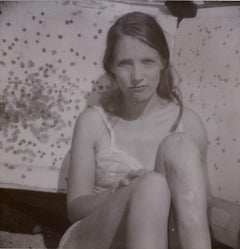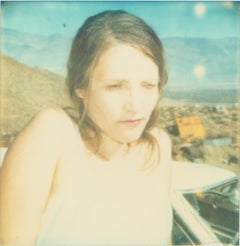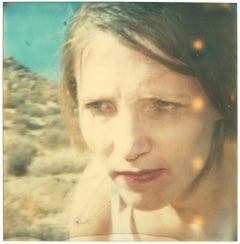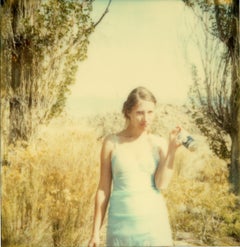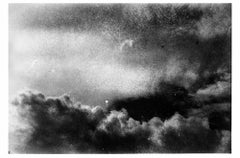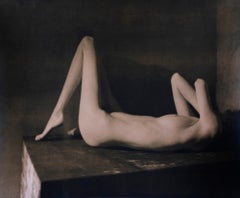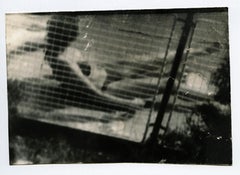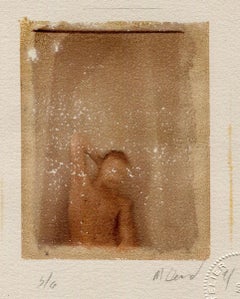Items Similar to Outtake (Wastelands) - Polaroid, Contemporary, 21st Century, Analog, mounted
Want more images or videos?
Request additional images or videos from the seller
1 of 4
Stefanie SchneiderOuttake (Wastelands) - Polaroid, Contemporary, 21st Century, Analog, mounted2003
2003
$3,850
$5,50030% Off
£2,909.22
£4,156.0230% Off
€3,367.17
€4,810.2430% Off
CA$5,401.36
CA$7,716.2330% Off
A$6,007.86
A$8,582.6630% Off
CHF 3,151.72
CHF 4,502.4530% Off
MX$73,309.57
MX$104,727.9630% Off
NOK 39,558.02
NOK 56,511.4530% Off
SEK 37,278.63
SEK 53,255.1930% Off
DKK 25,134.50
DKK 35,906.4330% Off
About the Item
Outtake (Wastelands) - 2003
Edition of 5,
128x125cm,
analog C-Print, hand-printed by the artist on Fuji Crystal Archive Paper,
based on the Polaroid,
Artist inventory Number 819.01,
complete with certificate and signature label
Not mounted
For sale is a piece from the Wastelands series. purchase the 2nd edition and have it unmounted.
Exhibited:
Wastelands, Städtische Galerie, Waldkraiburg, Germany (S) (2006) / Wastelands, Zephyr, Mannheim, Germany (S) (catalog) (2006) Wastelands, Kunstverein Recklinghausen, Germany (S) (2007)
Published in: WASTELANDS published by edition braus, Wachter Verlag, Heidelberg, 2006 (monograph)
Reality with the Tequila:
Stefanie Schneider’s Fertile Wasteland
by James Scarborough
“How much more than enough
for you for I for both of us darling?”
(E. E. Cummings)
Until he met her, his destiny was his own. Petty and inconsequential but still his own. He was cocksure and free, young and unaccountable, with dark hair and aquiline features. His expression was always pensive, a little troubled, but not of a maniacal sort. He was more bored than anything else. With a heart capable of violence.
Until she met him, she was pretty but unappreciated. Her soul had regis- tered no seismic activity. Dust bowl weary, she’d yet to see better days. A languorous body, a sweet face with eyes that could be kind if so inclined.
Until she met him, she had not been inclined.
It began when he met her. She was struck in an instant by his ennui. The sum of their meeting was greater than the imbroglios and chicaneries of their respective existences. He was struck by the blank slate look in her eyes. They walked, detached and focused on the immediate, obscenely unaware of pending change across a terrain of mountainous desert, their eyes downcast and world-weary, unable to account for the buoyant feeling in her heart. His hard-guy shtick went from potentiality to ruse. The gun was not a weapon but a prop, a way to pass time. Neither saw the dark clouds massing on the horizon.
They found themselves alone in the expanses of time, unaware of the calamity that percolated even as they posed like school kids for the pic- tures. Happiness brimmed in that wild terrain. Maybe things were begin- ning to look up.
That’s when the shooting started…
Stefanie Schneider assumes that our experience of lived reality (buying groceries, having a relationship with someone, driving a car) does not correspond to the actual nature of lived reality itself, that what we think of as reality is more like a margarita without the tequila.
Stefanie Schneider’s reality is reality with the tequila. She does not abol- ish concepts that orient us, cause and effect, time, plot, and story line, she just plays with them. She invites us to play with them, too. She offers us a hybrid reality, more amorphous than that with a conventional subject, verb, and predicate. Open-ended, this hybrid reality does not resolve itself. It frustrates anyone with pedestrian expectations but once we inebriate those expectations away, her work exhilarates us and even the hangover is good. An exploration of how she undermines our expectation of what we assume to be our lived reality, the reasons why she under- mines our expectations, and the end-result, as posited in this book, will show how she bursts open our apparatus of perception and acknowl- edges life’s fluidity, its density, its complexity. Its beauty.
She undermines expectations of our experience of reality with odd, other- worldly images and with startling and unexpected compressions and expansions of time and narrative sequence. The landscape seems familiar enough, scenes from the Old West: broad panoramic vistas with rolling hills dotted with trees and chaparral, dusty prairies with trees and shrubs and craggy rocks, close-up shots of trees. But they’re not familiar. These mis-en-scenes radiate an unsettling Picasso Blue Period glow or the intense celestial blue of the cafe skies that Van Gogh painted in the south of France. Yellow starbursts punctuate images as if seen through the viewfinder of a flying saucer. At the same time, objects appear both vintage and futuristic, the landscape of a post-apocalyptic world.
Landscapes change seemingly at random as do the seasons. Stefanie Schneider offers no indication of how time flows here, except that it con- ceivably turns in on itself and then goes its merry way. Time is a river whose source is a deep murky spring which blusters about with an occasional swirling eddy.
That Stefanie Schneider thwarts an easy reading is obvious but why does she do this? Since she will not countenance anything linear, logical, or sequential, and because she does not relish anything concrete and specific, she has to roil things up a bit. Nor does she seem comfortable with a book of images that is settled, discrete, and accountable. Instead she wants to create a panoply of anxious moments that refuse to settle down into any predetermined reading. She seeks to assemble the ele- ments, establish a provisional cosmology and then let each of us bring our own life experiences to bear on the enterprise. She unravels the paucity of a universe compromised by a matrix of either/or and replaces it with a kaleidoscopic neither/both cornucopia.
No fan of Descartes, she does not adhere to anything predicated on cogito ergo sum. No, the chance to present a universe of limitless iterations and utterances, open-ended, casualty-thwarting, intrigues her. She broaches a Heraclitan world: she shows that attempts to master, manage, and hoard time prove to be as elusive as a blind man trying to grab a salmon barehanded from a cold mountain stream. Even within the clear cut parameters of the Old West universe onto which she gloms, she shows that time is a bandit, that it is a mirage, that it is as unpredictable as it is indefinable and infinite. She coaxes us, scene by scene a slow- motion, out-ofsequence film clip, to agree with her that a running moat of lived reality easily overwhelms a castle of rationality.
Stefanie Schneider does not mount a demolition effort much less a de- construction one. Rather, she dismantles our expectations and sets about rebuilding not things but their connections anew. She is the mistress of the synapses. Indeed all these annoying ambiguities and irritating am- biances set the stage for a very particular certainty, one kernel of truth amidst these skewed and open-ended fields of inquiry. What connects all these images, in whatever order they might be presented1, is what I call an Augenblick, the mental distance between each page in whose ex- panse occurs the processing of shards of lived experience between these blinks of an eye that comprise the pages of Wastelands. During these innumerous Augenblicke, we take whatever shifts and turns that Stefanie Schneider throws at us, recalibrate our bearings, and then move on, at least until the next inevitable obstruction.
Irritating (and enlightening) as these shots may be, they’re nothing new. Rilke writes that, instead of trying to understand the quiddities of things, we should just be joyous at their mystery, just assume that they’re written in a lovely script that neither you nor anyone else can ever understand. Keats writes about being “awake forever in a sweet unrest,” although he’s talking about love. Stefanie Schneider makes us work for this idea of an Augenblick, but the result is worth it. The scenes and their sequencing dazzle us in a Borgesian Hall of Mirrors. Stefanie Schneider shows us that reality is anything but linear and user-friendly, but once one becomes accustomed to her enhanced dimension of space and time, we see the world in all its multifarious beauty and rapture. For that reason, Stefanie Schneider’s Augenblicke show us that reality may be a wasteland but it is as fertile as fertile can be.
1 I refer to Julio Cortazar’s novel, Hopscotch, in which he presents his story in a linear
way, with consecutive chapters that follow a particular coherence. In a note at the be-
ginning of the novel, he suggests an alternative reading via a new sequence of chapters.
So instead of reading chapter 1 first, chapter 2 second, you read, say chapter 57 first,
chapter 32 second, chapter 1 third and so on to form a new story. Similarly, Stefanie
Schneider’s Wastelands offers a multitude of coherences.
Stefanie Schneider was born and raised in Cuxhaven, Germany but lives and works in Southern California. Exploring the American dream and capturing it with Polaroid instant film. Situated on the verge of an elusive super-reality, her photographic sequences provide the ambience for loosely woven story lines and a cast of phantasmic characters that reflect a part of the narrators life told from her perspective. Often about love, communication. sexuality and relationships. Schneider works with the chemical mutations of expired polaroid film stock. Chemical explosions of color spreading across the surfaces undermine the photograph's commitment to reality and induce her characters into trance-like dreamscapes. Like flickering sequences of old road movies Schneider's images seem to evaporate before conclusions can be made - their ephemeral reality manifesting in subtle gestures and mysterious motives. Schneider's images refuse to succumb to reality, they keep alive the confusions of dream, desire, fact, and fiction yet they also explore the relationship with the medium and the viewer. The wabi sabi 'ness' of Schneider's work can not be denied or ignored. It's a step of acceptance of 'flaws', gaps and distortions. Missing pieces of the puzzle. The artist flaunts, uses and exposes the unknown using expired Polaroid instant film intentionally. Presents it. What you do with that is up to you. That missing part of the picture is for you to include yourself, you fill it in with yourself. That might be critical that it's there at all, missing and missing the entire point all together or by filling in the unknown with their own imagination. Even their own memories which then integrats the viewer and artist as one with limitless potential.
- Creator:Stefanie Schneider (1968, German)
- Creation Year:2003
- Dimensions:Height: 50.4 in (128 cm)Width: 49.22 in (125 cm)Depth: 0.12 in (3 mm)
- Medium:
- Movement & Style:
- Period:
- Condition:
- Gallery Location:Morongo Valley, CA
- Reference Number:1stDibs: LU652312133802
Stefanie Schneider
Stefanie Schneider received her MFA in Communication Design at the Folkwang Schule Essen, Germany. Her work has been shown at the Museum for Photography, Braunschweig, Museum für Kommunikation, Berlin, the Institut für Neue Medien, Frankfurt, the Nassauischer Kunstverein, Wiesbaden, Kunstverein Bielefeld, Museum für Moderne Kunst Passau, Les Rencontres d'Arles, Foto -Triennale Esslingen., Bombay Beach Biennale 2018, 2019.
About the Seller
4.9
Platinum Seller
Premium sellers with a 4.7+ rating and 24-hour response times
Established in 1996
1stDibs seller since 2017
1,036 sales on 1stDibs
Typical response time: 2 hours
- ShippingRetrieving quote...Shipping from: Morongo Valley, CA
- Return Policy
Authenticity Guarantee
In the unlikely event there’s an issue with an item’s authenticity, contact us within 1 year for a full refund. DetailsMoney-Back Guarantee
If your item is not as described, is damaged in transit, or does not arrive, contact us within 7 days for a full refund. Details24-Hour Cancellation
You have a 24-hour grace period in which to reconsider your purchase, with no questions asked.Vetted Professional Sellers
Our world-class sellers must adhere to strict standards for service and quality, maintaining the integrity of our listings.Price-Match Guarantee
If you find that a seller listed the same item for a lower price elsewhere, we’ll match it.Trusted Global Delivery
Our best-in-class carrier network provides specialized shipping options worldwide, including custom delivery.More From This Seller
View AllOuttake (Wastelands)
By Stefanie Schneider
Located in Morongo Valley, CA
Outtake - (Wastelands) - 2003
20x20cm,
Edition of 10, plus 2 Artist Proofs.
Archival C-Print, based on the original Polaroid.
Artist inventory Number 819.
Signature label and cer...
Category
Early 2000s Contemporary Black and White Photography
Materials
Archival Paper, Photographic Paper, C Print, Color, Polaroid
Hide Out (Wastelands) - Polaroid
By Stefanie Schneider
Located in Morongo Valley, CA
Hide Out (Wastelands) - 2003
20x20cm,
Edition of 10, plus 2 Artist Proofs.
Archival C-Print, based on the original Polaroid.
Artist inventory Number 1168.
Signature label and Cert...
Category
Early 2000s Contemporary Portrait Photography
Materials
Archival Paper, Photographic Paper, C Print, Color, Polaroid
Insatiable (Wastelands) - Contemporary, Polaroid, 21st Cetury, Polaroid
By Stefanie Schneider
Located in Morongo Valley, CA
Insatiable - he came to my Valley (Wastelands)
Edition 2/5 , 57x56cm, 2003,
analog C-Print, hand-printed by the artist on Fuji Crystal Archive Paper,
based on a Polaroid.
Artist i...
Category
Early 2000s Contemporary Color Photography
Materials
Archival Paper, Photographic Paper, C Print, Color, Polaroid
Unbound (Wastelands) Contemporary, 21st Century, Polaroid, Portrait, Photograph
By Stefanie Schneider
Located in Morongo Valley, CA
Unbound (Wastelands) - 2003
Edition of 10,
38x36cm,
Archival C-Print on Crystal Fuji Archive paper, matte surface, based on the Polaroid.
Artist inventory Number 836.
Signature ...
Category
1990s Contemporary Portrait Photography
Materials
Archival Paper, Photographic Paper, C Print, Color, Polaroid
After (Wastelands) - Contemporary, Analog, Polaroid, Color
By Stefanie Schneider
Located in Morongo Valley, CA
After (Wastelands) - 2003
20x20cm,
Edition of 10 plus 2 Artist Proofs.
Archival C-Print, based on the original Polaroid.
Artist inventory Number 18799.
Signature label and Certi...
Category
Early 2000s Contemporary Color Photography
Materials
Archival Paper, Photographic Paper, C Print, Color, Polaroid
Jordan (Wastelands) - Contemporary, 21st Century, Polaroid, Figurative
By Stefanie Schneider
Located in Morongo Valley, CA
Jordan (Wastelands) - 2003
Edition of 10,
38x36cm,
Archival C-Print, based on the Polaroid.
Artist inventory Number 1176.13.
Signature label and Certificate.
Not mounted.
The wo...
Category
Early 2000s Contemporary Color Photography
Materials
Metal
You May Also Like
Expired_14_2020 - Photograph by Serena Zeppilli
Located in Roma, IT
This photograph Expired_14_2020 was taken by the Italian photographer Serena Zeppilli.
It is part of the series "I was looking for something that I...
Category
21st Century and Contemporary Contemporary Figurative Photography
Materials
Photographic Paper
Untitled 20245 - lith silver gelatin print
By John Casado
Located in Burlingame, CA
John Casado - Untitled 20245, figurative black and white reclining female nude.
2001 - Unique lith silver gelatin photographic print.
image = 18 7/8 x 22 1/4 or 48 x 56.5 centimeter...
Category
21st Century and Contemporary Contemporary Nude Photography
Materials
Silver Gelatin
Untitled, MT Inv. No 10-1-167 – Miroslav Tichy, Woman, Czech, Photography
By Miroslav Tichy
Located in Zurich, CH
Miroslav Tichý (*1926, Czech Republic)
Untitled, MT Inv. No 10-1-167
Unknown, ca. 1970-1990
Silver Gelatin Print
Sheet 17,7 x 17,8 cm (7 x 7 in.)
Unique
Print only
Tichý, practically reinventing photography from scratch, reconstitutes pictorialism along with it, and not as a distortion of the medium but as something like its essence. What counts for him is not only the image - just one moment in the photographic process - but also the chemical activity of the materials, which is never entirely stable or complete, and the delimitation of the results via cropping and framing.
Marginal and exceptionally voyeuristic, in his methods Tichý could be described as an “art brut photographer” yet he is also marked by classical influences. Though his images are produced with poor-quality equipment and carelessly shot, they offer an idiosyncratic and almost hallucinatory vision of a fantastical, eroticised reality. With his endless return to the same subject and the volume and regularity of his production, Tichý’s work draws many parallels to certain practices of conceptual art during the same period.
– Art, Black and White...
Category
Late 20th Century Conceptual Black and White Photography
Materials
Silver Gelatin
Untitled (Aiden 12), Polaroid Transfer by Mark Beard
By Mark Beard
Located in New York, NY
This polaroid transfer by Mark Beard is offered by CLAMP in New York City.
Category
1990s Contemporary Photography
Materials
Archival Paper, Polaroid
Starlet Rose - 21st Century Contemporary Photographic Print - B/W Polaroid
By Pia Clodi
Located in Zürich, CH
Shadowed Beauty - 21st Century Contemporary Photographic Print - Black & White Polaroid, Polaroid Original, Shadow Gapped Frame - Photographic Print on Aluminium Dibond - Edition of ...
Category
21st Century and Contemporary Contemporary Figurative Photography
Materials
Carbon Pigment, Polaroid
$1,808 Sale Price
20% Off
Untitled Polaroid 23, Unique Self Portrait Photograph by Dietmar Busse
By Dietmar Busse
Located in New York, NY
Untitled Polaroid 23, Unique Self Portrait Photograph by Dietmar Busse.
2001
Signed and dated in black ink, verso
Polaroid (Unique)
5 x 4 inches, image
Contact gallery for price.
Category
Early 2000s Contemporary Photography
Materials
Polaroid
More Ways To Browse
Bowl Yellow Black
Apparatus And Hand
Cars For Sale
West German Bowl
German Crystal Bowl
Stage Props Used
Vintage Photography Props
Apparatus Cloud
Vintage Photography Japan
Rock Festival
German Cameras Vintage
Punk Photography
Western Landscape Black White Prints
Egypt Photography
Olha Stepanian
Audrey Hepburn Signed
Scottish Nude
Erotic Silver
